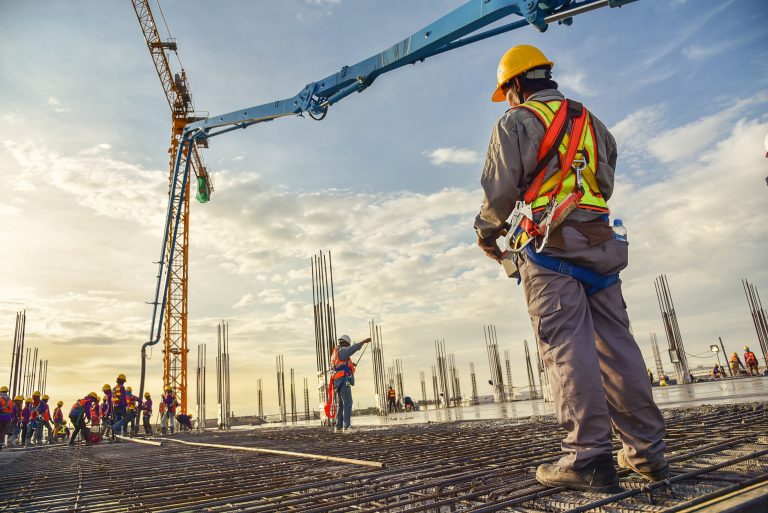How To Steer Your Construction Business Through Volatility

The CEO of Master Builders Australia (MBA) has likened the sector to the canary in the economic coal mine as volatility remains high in the construction industry.
This is despite a slowdown in building cost increases. CoreLogic reports home-building costs eased to 0.5% in the September quarter, making it the slowest quarterly growth for eight years.
That’s good news for inflation, profits, and cash flow. As well, the civil and non-residential construction sectors saw a 3.8% increase in building activity in the last financial year.
Understanding Australian builder insolvencies
During the last financial year, the domino effect has wreaked havoc among Australian builders. Almost 7,600 companies went into administration or had an external controller appointed for the first time. That was a whopping 55% increase on 2021-22.
Smart Company crunched figures from the Australian Securities and Investment Commission to deliver those findings.
Apart from sector volatility, the top reasons for builders going bust include:
- Supply chain blowouts – delays and costs.
- Fixed-price contracts in the face of inflation.
- Cash flow problems, including not seriously chasing debts or shorter payment terms
- Regulatory issues.
- The zombie factor: The end of the pandemic artificially propping up some weak businesses.
- Failure to plan, innovate, or hire the right or enough staff.
Factors influencing construction growth for 2024 and beyond
Knowing what’s ahead can help your construction business plan to survive and thrive.
Home building activity is still declining with 173,755 homes being built this financial year. This is a 16.5% drop from last year. There are 170,100 pegged for 2023-24, a 2.1% decline.
Those figures will eventually bottom out before peaking at just over 241,000 in 2026-27, says the MBA.
The costs of living and labour as well as economic volatility are driving those decreases.
Meanwhile, the non-residential segment is the sweet spot, thanks to investment in transport and social infrastructure.
The MBA forecasts $124.33 billion of activity for 2024-25 – a peak. After that, resource and major transport infrastructure projects will take the lead, but they will decrease to $106.42 billion in 2027-28.
These are the factors likely to impact on the 2024 outlook:
- The forecast for raw material prices.
- Demand for skilled construction workers.
- Bigger picture economic forecast, including GDP growth, inflation rates, and government policies.
- Anticipated changes in government policies around tax, subsidies, and regulation that could affect construction costs.
Cutting your construction costs
Even if your business is a lean operation, some of these tips may help you trim costs further.
Design Process:
Savvy builders are locking in costs for labour as well as construction assets, a form of early procurement or front-loading contracts. Consider also reducing the project scope and complexity, as well as negotiating to switch to different materials or systems.
During the build:
Scrutinise at the post-design stage to find ways to tweak your plans and include more cost-effective building materials.
Harness technology to keep to your budget, stay compliant with safety requirements, manage subbies, buy materials dynamically, project estimation, and streamline communication.
Can you re-use excess construction materials? Start by listing what’s left over and storing it where possible. An extra carpet square might come in handy for carpeting a closet, for example.
Ensure you build strong relationships with suppliers and subcontractors, too. You may be able to access better prices and terms and access their expertise and support.
Network with other businesses in your local or regional community, including those in construction, to help generate new leads, opportunities, and insights.
These basics matter
Key principles for bolstering your building business:
- Recruit the right people for expertise, quality, productivity, workplace cultural fit, ethics, and reliability.
- Keep a focus on your cash flow and your profit. Software can help you manage accurate job costing as a feature set in real-time. That means auto-updates to your expenses for projects as they happen. It’s a powerful dashboard for your business that doesn’t rely on cumbersome spreadsheets or your memory.
- Invest in marketing to build your brand online, including on social media. Think search engine optimisation and creating a great customer experience via website or mobile phone. Use automated marketing campaign tools.
- Evolve to changing times. Create a change management plan, upskill, cross, and reskill your staff and embrace ideas and innovations from wherever they emerge on your organisational chart.
- Spotlight risk management across your business. Understand how risk multipliers work – scenarios that combine individual risks to exponentially increase the negative impacts for business.
And on that last point, reach out to us and we’ll work with you to protect your business in a changing landscape.
Get Professional Insurance Advice
Northern Insurance Solutions (NIS) know business insurance and fight for the rights of North Queensland businesses to receive quality insurance policies that are ‘value for money’ and supported locally by a professional, results-driven team who care!
Our experienced, friendly, and reliable insurance team pride themselves on their holistic approach for creating effective insurance solutions using globally branded products.
With a staff combined 100 years of experience, you can trust in our team to provide a holistic approach for creating effective insurance solutions using globally branded products from Steadfast.
Speak with us about how we can work with you to help make your business more resilient. Call our office in Ayr today on 07 4783 1310 to discuss.
Read about our approach to managing business insurance.
Learn more about the types of business insurance that’s available.
Northern Insurance Solutions
Locals Covering Locals


